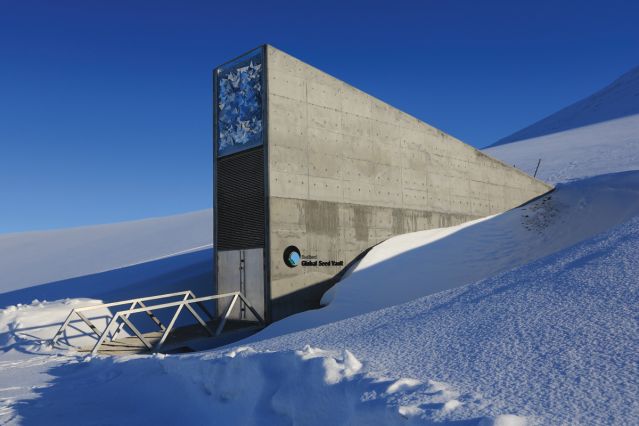The Earth's Backup Plan
2.5 billion seeds of hope lie under Norwegian permafrost.
By Diane Cole published May 4, 2015 - last reviewed on June 9, 2016
When I visited the Canadian Arctic in the summer of 2003, I told people that my son and I wanted to get there before it was too late to see polar bears in their natural habitat. Many of my friends thought I was being alarmist, but already, warmer Arctic temperatures had led to disappearing glaciers, and less sea ice meant less territory over which the bears could roam and hunt for food. Their home, in short, was disappearing—melting—around them.
By 2007, when we booked a second trip to the Arctic—this time, to the Norwegian archipelago of Svalbard—even more ice had melted. The resulting drop in food resources was probably why one polar bear we spotted looked so thin and undernourished. The real Arctic chill, I now think, comes from the feeling we get from its inexorable shrinking.
But the Arctic, and specifically Svalbard, also stands for preservation. The Svalbard Global Seed Vault, built into the permafrost at the base of a mountain and designed to last 1,000 years, opened in 2008 as the planet’s largest fail-safe agricultural storage facility—the ultimate backup for 1,700 other food-crop gene banks already established around the globe.

The imposing facility—while only its lobby is visible from the outside, its three seed vaults are sited 130 meters into the rock—is maintained by the Norwegian government. It contains some 860,000 seed varieties, but has the capacity to store 4.5 million. There’s even backup for the backup: Each stored variety will constitute, on average, 500 seeds, so a maximum of 2.5 billion seeds of hope may be kept in the vault.
Submit your response to this story to letters@psychologytoday.com (link sends e-mail). If you would like us to consider your letter for publication, please include your name, city, and state. Letters may be edited for length and clarity. For more stories like this one, subscribe to Psychology Today, where this piece originally appeared.
